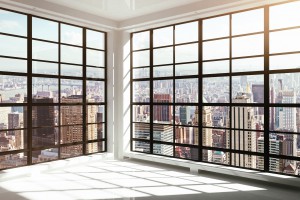A big house on a big block of land, with the Hills hoist slowly spinning in the breeze and ample space for a good game of backyard cricket…is the picture most older generations would paint if you asked for their idea of the ‘Great Australian Dream’.
Baby Boomers raised their young families in these constructs of suburban nirvana in the seventies and eighties.
However, the tide is slowly turning, as younger generations show a consistent preference for location over land, where bigger doesn’t necessarily mean better.
A surge in the popularity of vertical living has become evident among Australia’s Gen Y’s in particular, who have come of age this century and started their ascension of the property ladder.
Where once one bedroom apartments were a clever way for developers to cram more properties into one complex and increase profits, now they are becoming a sought after commodity for a growing demographic of smaller, high income professional households.
Data from the Australian Bureau of Statistics predicts a 1.7 million increase in the number of single person households over the next twenty years, with further suggestions that childless couples could outnumber the traditional ‘nuclear family’ by 2031.
Café society
The way young people spend their work and leisure time has altered significantly since I bought my first a house and started a family.
Gen-Y’s want to be ‘where the action is’, which are usually humming inner city neighbourhoods, choc full of latte sipping socialites, boutique shops and plenty of leisurely pursuits.
These areas offer close proximity to CBD offices, as well as the necessary transport links for environmentally aware residents to catch a train, tram or bus to work.
They are also notoriously expensive, with prices in some of the traditionally more sought after postcodes around the likes of Melbourne, Sydney and Brisbane following a consistently above average upward trajectory for decades.
This has made certain areas more ‘exclusive’ and therefore harder to break into as a buyer, particularly looking to secure your first home.
These days acquiring a 2 or 3-bed apartment, let alone some type of terrace or detached dwelling in certain inner city suburbs, is a game for wealthier, upsizing purchasers who have enough financial means to retain their cherished urban lifestyle as they raise a young family.
As a result, the increasing number of singletons and couples without kids seeking affordable accommodation (both to rent and purchase) in their beloved, infrastructure and amenity soaked inner city precincts, has seen a slow but steady rise in the popularity (and price tags) of one-bedroom apartments.
What does this mean for investors?
As a property investor, it’s essential to understand how certain demographic trends impact your market.
And when I say market, I mean both tenants and owner-occupiers – as the former pay your mortgage, while the latter dictate long-term values.
Gen Y’s are the new property players on the block, so working out what they want from a home to both rent and buy means more likelihood of identifying and securing an investment that will outperform over the next twenty or so years at least (if the longevity of the eighties and nineties suburban McMansion trend is anything to go by).
Of course not any one-bedroom apartment will make the grade with today’s young, discerning and cashed up consumer.
So what constitutes a good one-bedroom apartment property investment?
1. Location
While there are a lot of 1 bedroom apartments in our capital city C.B.D's, I would avoid these locations, instead opting for inner suburban locations where demand historically supply and there is little or no developable land left.
Ideally, look for interesting architecture, tree lined streets and lots of lifestyle amenity, within about a ten-kilometre radius of the CBD.
Importantly, look for areas that attract high paid professionals.
While outer suburban planning policies are slowly catching on to the concept of higher density living, apartments are still generally preferred by inner city-ites.
And that's especially the case for one bedroom apartments
2. Architecture
Avoid generic looking buildings in preference for something with character and/or period features.
3. Building
Large, multi-storey towers generally do not perform as well with regard to long-term values as smaller, boutique blocks of maybe twelve to twenty apartments.
Quite simply, there are too many of them to create that scarcity factor, which ultimately underpins above-average growth.
Older, smaller complexes usually come with the most charm and desirability and often there will be a notoriously sought after building in certain postcodes.
4. Amenity and infrastructure
Make sure you buy a property that's close to all the things that young people want and need, including an abundance of cafes, retail outlets, entertainment precincts and public transport links.
5. Floorplan
Although it may be small, tenants and buyers still want useable space in a one-bed apartment.
Make sure there is plenty of storage, a decent sized separate living space and a good flow to the layout, preferably with outside balcony space.
An abundance of natural light is another good selling point.
6. Position
Where is the apartment situated within the complex?
If it’s on the second or third floor, is there easy access to move furniture in and out?
Consider things like noise, light, outlook, security and access when assessing the position of an apartment in the building.
7. Car space
Having one on title will immediately increase the value of your investment significantly as well as make it more appealing to a wider range of tenants.
8. Outlook
Great views can add substantially to the appeal and the price tag of an apartment.
Glimpses of the bay, leafy parkland and well-manicured, on-site gardens can all command a premium.
If there happens to be an older building or vacant block next door, check to see if there are plans for future development that might obscure the view you’ve paid for.
The bottom line:
Given Australia’s changing lifestyles and shrinking households, the right type of one bedroom apartment could make a fantastic addition to your property portfolio, providing decent yields and above-average long term gains as a more affordable inner city asset.



















